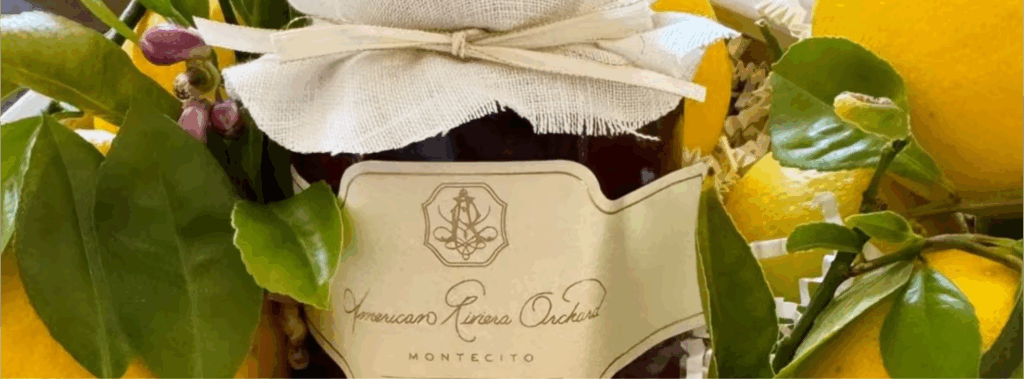As your business grows, your brand name becomes one of your most valuable assets. However, not every name or logo can qualify for legal protection. One of the most common stumbling blocks businesses face when applying for a trade mark is being told their proposed mark is “descriptive.”
This article explains what a “descriptive” trade mark is, why it matters, and what you can do to protect your brand. We’ll keep things simple – no law degree required.
Disclaimer: The article is for informational purposes only and does not constitute legal advice. For tailored advice specific to your circumstances, contact Jamieson Law.
What is a descriptive trade mark?
A trade mark is considered descriptive if it directly tells consumers about the goods or services being offered, such as what they are, what they do, or one of their key features. In other words, a descriptive made explains the good or service itself rather than identifying the business behind it. For example:
- Cold & Creamy for ice cream
- Fast Car Wash for car cleaning services
- Fresh Baked Bread for a bakery
- Edinburgh Solicitors for a law firm based in Edinburgh,
Marks like this use everyday words that other traders would reasonably need to describe their goods or services. Because of that, they lack distinctive character which is a core legal requirement under the Trade Marks Act 1994.
This hurdle most often arises with word marks, or with simple logos made up only of descriptive wording. While a purely descriptive name will usually be refused, a distinctive stylisation or design element can sometimes help overcome the objection if it makes the overall mark more memorable or unique, such as different fonts, bordering and graphics.
A mark will be considered distinctive if it is not immediately obvious to the average consumer what the mark relates to. Brands like Apple, Amazon and Shell use everyday words, but in a way that bears no direct connection to the goods or services they provide. Because of this, they are inherently distinctive. Of course, if Apple ever decided to enter the grocery market, it would likely struggle to register Apple as a trade mark for fruit, since in that context the word directly describes the goods themselves.
Likewise, invented words and portmanteaus, such as Ocado, Monzo or Microsoft, are likely to be considered inherently distinctive, as they have no existing meaning or direct link to the goods or services they cover.
Why the law hesitates to protect descriptive marks
There are several important reasons why intellectual property offices routinely refuse descriptive marks:
- Clarity for consumers: A trade mark must point clearly to one business, not merely describe what’s being sold. It helps customers determine what business is behind a product or service.
- Fair competition: Everyday language should be available for everyone in an industry to use.
- Avoiding monopolies: Allowing one business to register a term like “Best Pizza Takeaway” would unfairly restrict competitors.
- Effective branding and innovation: Descriptive marks also make weak brands. They rarely build a consumer-brand relationship. Distinctive trade marks, by contrast, help businesses gain recognition, trust, and even innovation as businesses are encouraged to develop products that align with their brand’s unique character and reputation.

A photo of American Riviera Orchard jam posted to Instagram by Tracy Robbins. From Tracy Robbins via Instagram
A real-world example: the ‘American Riviera Orchard’ case
In 2024, the U.S. Patent and Trademark Office (USPTO) rejected an application by Meghan Markle, the Duchess of Sussex and former actress, to register her homeware brand “American Riviera Orchard.” The USPTO ruled that the mark was “primarily geographically descriptive” because “American Riviera” is a widely used nickname for Santa Barbara, California which is the area where the goods originated. Adding “Orchard” to the name didn’t make it distinctive enough.
Although this took place in the U.S., the UK Intellectual Property Office (UKIPO) would likely reach a similar conclusion. Under UK law, a trade mark will be refused if it merely describes the kind, quality, intended purpose, value, or geographical origin of the goods or services.
The reasoning is simple: descriptive or geographical terms should remain free for all traders to use.
How to strengthen a descriptive mark
While descriptive marks face challenges, all is not lost. There are several strategies to make your trade mark application stronger – or to build distinctiveness over time.
1. Conduct a trade mark search
Before you apply, search the trade mark register in all relevant countries. This ensures that your proposed name isn’t already registered for similar goods or services. A search helps you avoid objections, opposition proceedings, and costly rebranding later.
2. Take legal advice early
Speaking with Jamieson Law before applying can make a big difference. We can identify potential issues, suggest ways to strengthen your mark, and ensure your application is properly drafted from the outset.
3. Use a more distinctive element
The UKIPO is strict when it comes to refusing marks that are purely descriptive. If your preferred name is borderline, try adding something distinctive such as an invented word, a surname. For example, “Johnson’s Fresh Baked Bread” adds a unique identifier that transforms a generic term into a protectable brand.
4. Be specific in your application
When filing your application, you must choose the right classes of goods and services and describe them accurately. Being too vague or too broad can weaken your claim and make your mark harder to defend. Focus on the areas that truly reflect your business activities.

5. Provide evidence of use (if applicable)
If you’ve already been trading under your mark, evidence of consistent and long-term use such as marketing materials, sales figures, and customer recognition can help show that your mark has acquired distinctiveness through use. To support this, the UKIPO typically expects evidence covering at least the past five years, demonstrating that consumers have come to associate the mark specifically with your business. Useful evidence can include:
- sales and revenue figures showing the commercial scale of your business under the mark
- advertising spend and examples of marketing materials (brochures, packaging, social media, online ads, etc.)
- press coverage, media features or awards that reference the mark
- customer testimonials or survey results evidencing brand recognition
- screenshots or analytics showing online traffic and engagement with the brand.
The stronger and more widespread your evidence of use, the better your chances of convincing the UKIPO that your mark has acquired distinctiveness and should therefore be accepted for registration.
6. Consider registering a logo instead
If your word mark alone is descriptive, applying for a logo (with stylisation, colours, design, or graphics) instead can improve your chances of registration. The visual element can make your mark more distinctive and protectable.
7. Consistent brand use
Use your mark consistently across all your materials, such as packaging, website, social media, and signage. Over time, consistent use can strengthen the link between the mark and your business in consumers’ minds, helping you build distinctiveness and brand value.
How much evidence do I need for acquired distinctiveness?
If your business is still in its early stages, it may be better to adopt a more distinctive name from the start. Descriptive marks can limit growth and make it harder to stop competitors using similar terms.
However, if your business already uses a descriptive name and has built recognition under it, there are still ways to protect it. With evidence of use, clever branding, and the right legal strategy, you can develop stronger protection over time.
However, in practice, this is a high bar to meet. You’ll need persuasive evidence showing that the public no longer views the words or design as descriptive, but as your brand. The UKIPO will consider: length and consistency of use, geographic scope of use, sales and market share data, promotional investment, and importantly, evidence of consumer perception – do people actually recognise your mark as identifying your business?
Famous examples in practice:
- “have a break” (Nestlé / Kit Kat): this common phrase was refused for being a generic invitation, however it did successfully register its slogan “Have a Break… Have a KitKat” as a trade mark. The courts found that while the full slogan had acquired distinctiveness through decades of advertising and consumer recognition (since 1978), the shorter phrase had not, on its own, come to identify the brand as its commercial origin.
- Nestlé’s four-finger shape (loss): despite wide recognition, the UK courts found that consumers recognised the famous four-fingered KitKat bar shape but did not see it as indicating commercial origin. It failed the key test of functioning as a trade mark.
- Cadbury’s purple colour (win, then loss): Cadbury’s attempt to register its signature purple shade faced years of opposition from Nestlé. The first application was rejected for vagueness, but later versions succeeded once Cadbury precisely defined the colour (Pantone 2685C) and proved extensive consumer association built over more than 100 years. This case shows the importance of clarity in defining a colour mark and, again, providing strong evidence of acquired distinctiveness.
- Toblerone’s triangular shape (win): Toblerone’s unique prism-shaped chocolate bar has been instantly recognisable for over a century. First launched in 1908, the brand’s consistent use of this distinctive shape allowed it to register the design as a trade mark in 1997
Key takeaways
- If the term you’re trying to register just describes what your business does, chances are high it will be refused registration
- The law is there to stop one business blocking descriptive language that others in the trade need to use
- A descriptive mark can succeed only if you can demonstrate (or the mark itself is) so well known that people recognise it as your brand
- You are better to start with something more distinctive for smoother registration (cost and time effective) and to build and protect your brand
- If you already use a descriptive mark, consider adding distinctive elements
- If you’re developing your brand, think: “could someone in my line of business describe what I do using exactly those words?” If yes, it’s likely too descriptive. Time to get creative.
Your next steps
Trade mark law is complex, particularly where a mark sits on the border between descriptive and distinctive. At Jamieson Law, our IP team advises individuals, start-ups, SMEs, and scaling businesses across the UK and further afield on trade mark strategy, registration, and enforcement. Whether you’re choosing a new name, responding to a UKIPO objection, or building an international portfolio, we’re here to protect your brand every step of the way.




